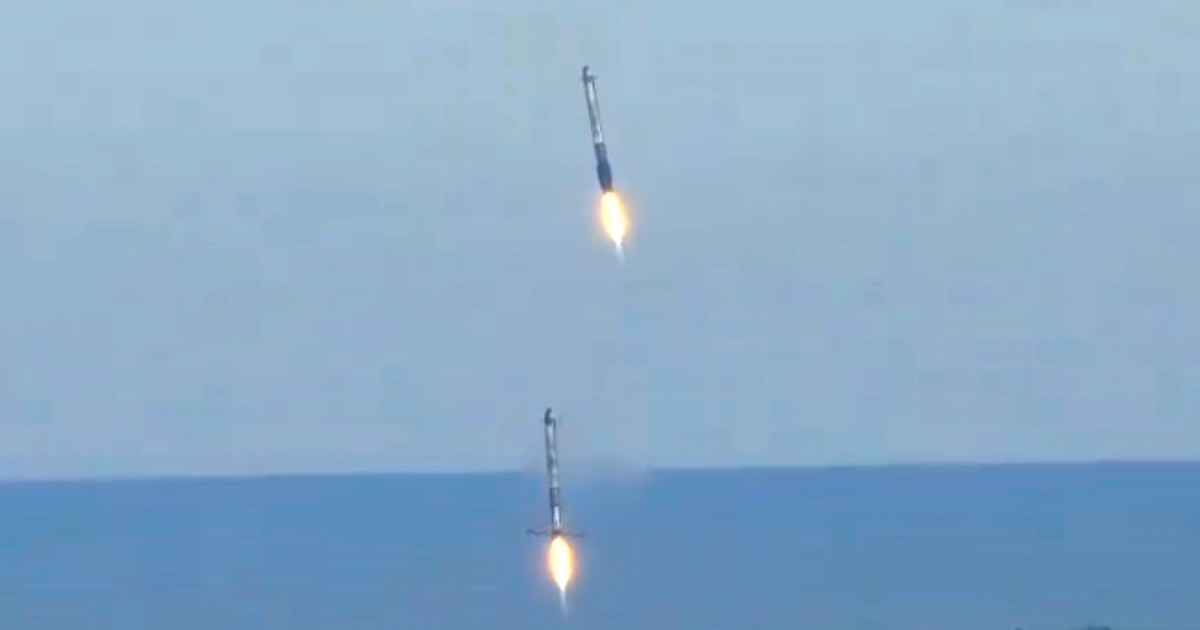
SpaceX has successfully launched a weather satellite for the National Oceanic and Atmospheric Administration (NOAA) using its triple-booster Falcon Heavy rocket.
Launched from the Kennedy Space Center in Florida on Tuesday, the SpaceX rocket deployed the GOES-U satellite, which will orbit 22,300 miles above Earth and monitor weather conditions across the U.S., Central America, and South America. Once it reaches operational orbit, the satellite will be renamed GOES-19.
The Falcon Heavy is composed of three Falcon 9 boosters, and so it has three times the power of SpaceX’s workhorse rocket, creating around 5.5 million pounds of thrust at launch.
Following booster separation, the two new side boosters supporting Tuesday’s mission returned to SpaceX Landing Zones 1 and 2 (LZ-1 and LZ-2) at Kennedy. No attempt was made to recover the core booster.
SpaceX shared footage of the two boosters separating from the core booster.
Side boosters separate from Falcon Heavy pic.twitter.com/5jCrp6GLTu
— SpaceX (@SpaceX) June 25, 2024
It also posted footage of the two boosters returning to Kennedy about eight minutes after launch. Landing the boosters in this way enables SpaceX to use them for multiple missions, helping it to cut the cost of spaceflight. Its first successful booster landing took place in 2015, and since then some of its boosters have flown more than 20 times.
Falcon Heavy’s side boosters land on Landing Zones 1 and 2 pic.twitter.com/5RDbTGNnSq
— SpaceX (@SpaceX) June 25, 2024
GOES-U is part of NOAA’s sophisticated Geostationary Operational Environmental Satellites (GOES) series, and it will assist weather forecasters and climate researchers with real-time high-resolution imagery, earlier detection of severe weather that could save lives, and tropical cyclone forecasts, SpaceX said. The weather satellite is also fitted with a suite of space weather instruments designed to detect solar storms early and to help predict their effects.
Tuesday’s mission was the Falcon Heavy’s 10th flight and its first since December 2023, when it launched the U.S. Space Force’s experimental X-37B Orbital Test Vehicle. The Falcon Heavy is currently SpaceX’s most powerful operational rocket, but the company is now testing the mighty Starship, whose thrust at launch is about triple that of the Falcon Heavy. The Starship is expected to take its fifth test flight next month after achieving a successful orbital test earlier this month.
Editors’ Recommendations
Services Marketplace – Listings, Bookings & Reviews
